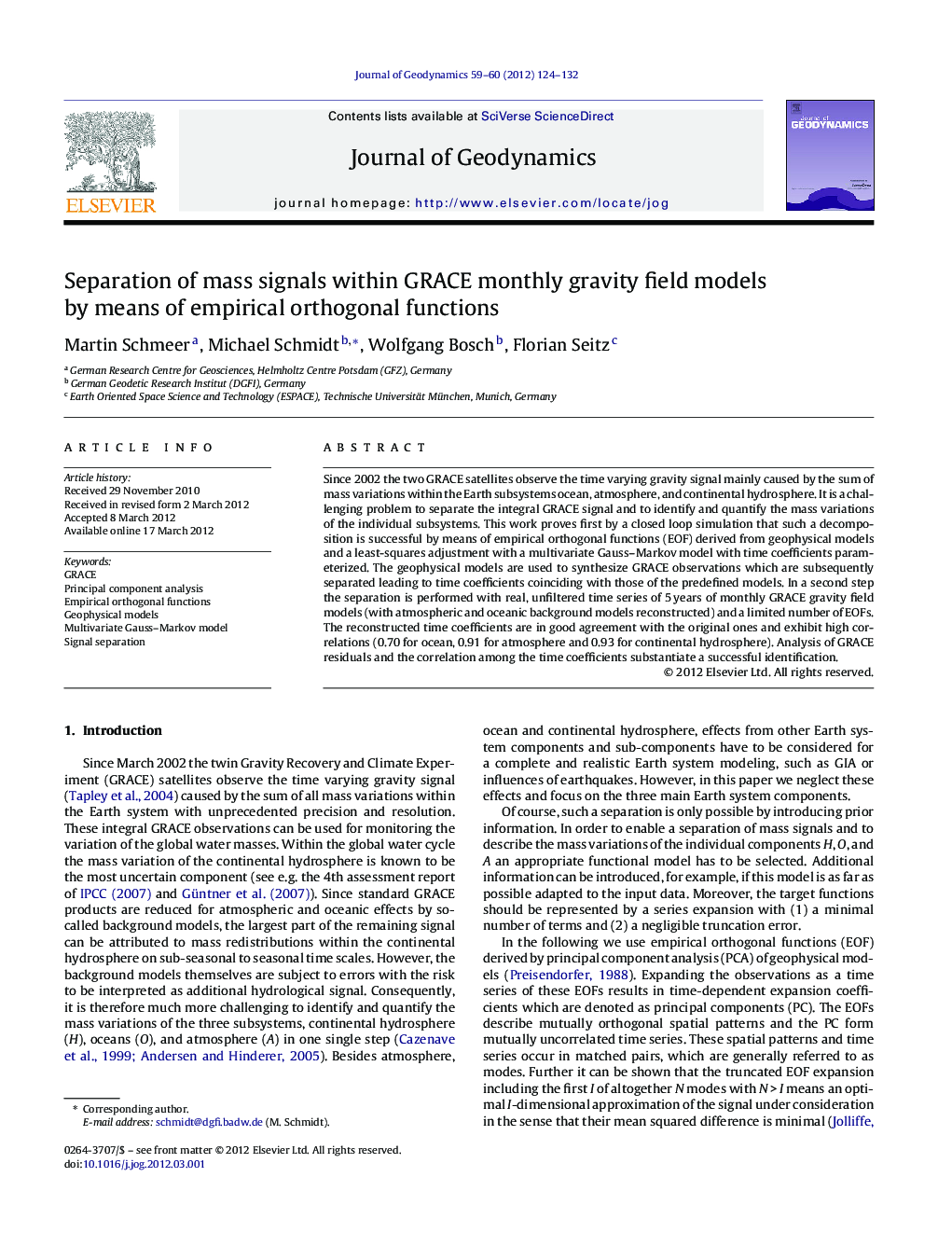| Article ID | Journal | Published Year | Pages | File Type |
|---|---|---|---|---|
| 4688295 | Journal of Geodynamics | 2012 | 9 Pages |
Since 2002 the two GRACE satellites observe the time varying gravity signal mainly caused by the sum of mass variations within the Earth subsystems ocean, atmosphere, and continental hydrosphere. It is a challenging problem to separate the integral GRACE signal and to identify and quantify the mass variations of the individual subsystems. This work proves first by a closed loop simulation that such a decomposition is successful by means of empirical orthogonal functions (EOF) derived from geophysical models and a least-squares adjustment with a multivariate Gauss–Markov model with time coefficients parameterized. The geophysical models are used to synthesize GRACE observations which are subsequently separated leading to time coefficients coinciding with those of the predefined models. In a second step the separation is performed with real, unfiltered time series of 5 years of monthly GRACE gravity field models (with atmospheric and oceanic background models reconstructed) and a limited number of EOFs. The reconstructed time coefficients are in good agreement with the original ones and exhibit high correlations (0.70 for ocean, 0.91 for atmosphere and 0.93 for continental hydrosphere). Analysis of GRACE residuals and the correlation among the time coefficients substantiate a successful identification.
